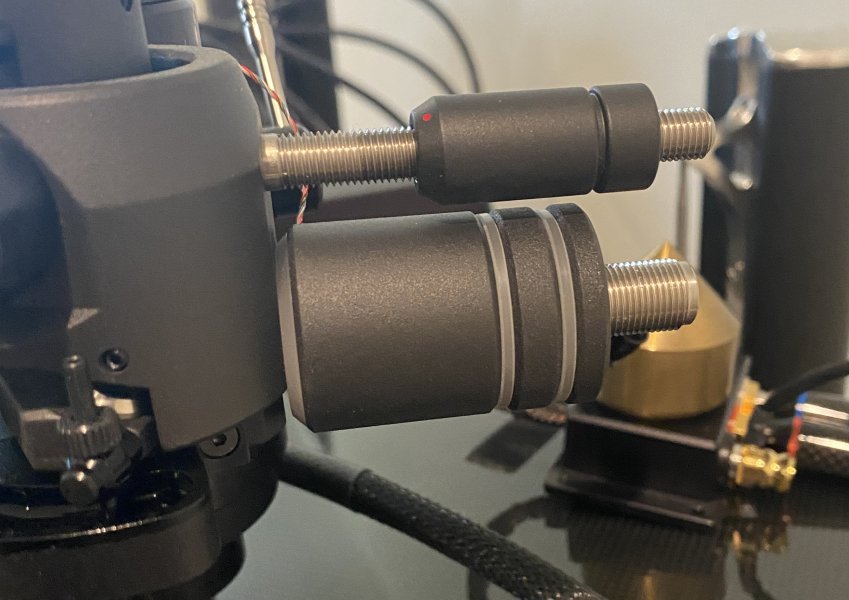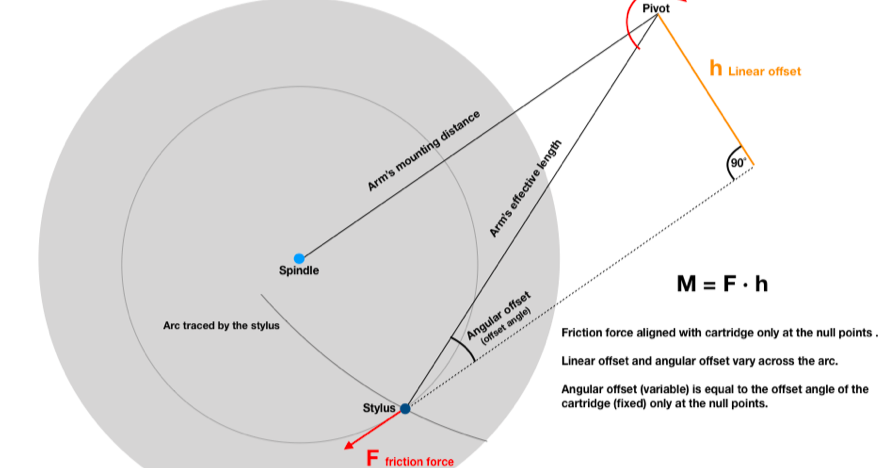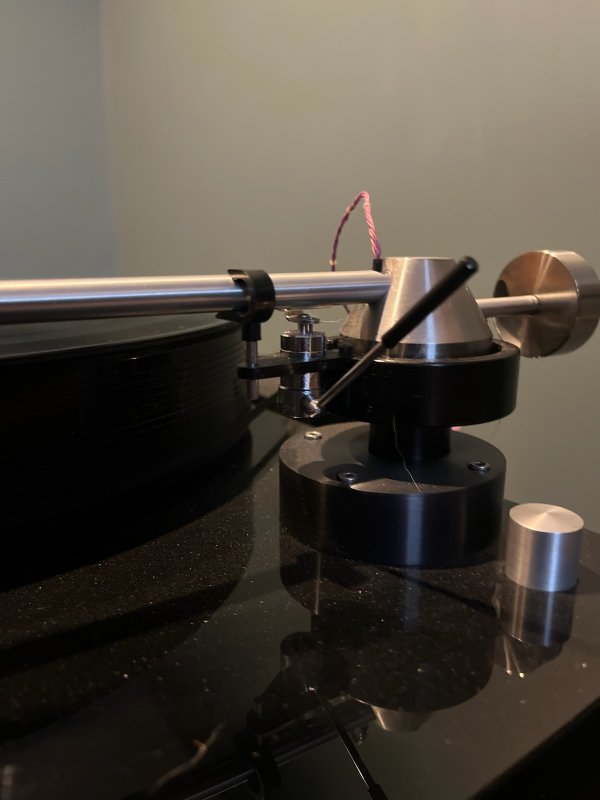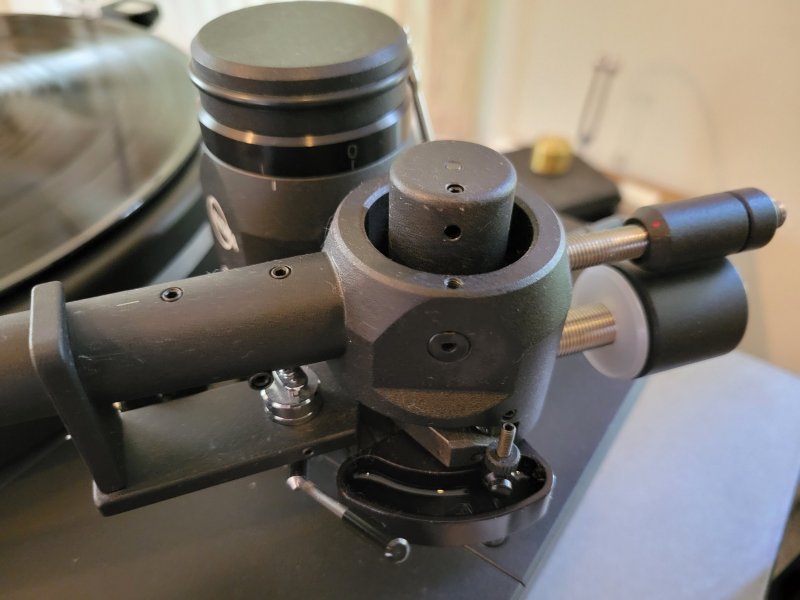Kuzma SAFIR 9
- Thread starter Marcus
- Start date
You are using an out of date browser. It may not display this or other websites correctly.
You should upgrade or use an alternative browser.
You should upgrade or use an alternative browser.
M. Fremer’s review of Safir 9 was published in TAS. Interesting read…
From the conclusion:
“Had I not spend previous eight or so years owning and using as a reference the remarkable and costly SAT CF1-09, I’d declare the Kuzma Safir 9, the most accomplished and best-performing tonearm I’ve yet heard.”
From the conclusion:
“Had I not spend previous eight or so years owning and using as a reference the remarkable and costly SAT CF1-09, I’d declare the Kuzma Safir 9, the most accomplished and best-performing tonearm I’ve yet heard.”
The review is not yet available on the TAS website. From the quoted conclusion, Fremer seems to give a higher comment to SAT CF1-09. Yet they’re in a very different price league.M. Fremer’s review of Safir 9 was published in TAS. Interesting read…
From the conclusion:
“Had I not spend previous eight or so years owning and using as a reference the remarkable and costly SAT CF1-09, I’d declare the Kuzma Safir 9, the most accomplished and best-performing tonearm I’ve yet heard.”
Last edited:
Try this, review starts on page 63.


While expecting the arrival of Safir 9, I borrowed a 4P 9“ from a friend and mounted it on my AF1, to pair with Lyra Atlas SL. I’ve tried this combo at my friend’s house and it sounds great. At home, I have also the 4P 11”. To my surprise, the 4P 9” seems to be a better companion than the 11” when pairing with Lyra Atlas.
Atlas sounds livelier on the 9’ while not losing the bottom octave and the scale which is well presented on the 4P 11“. The soundstage is vivid and 3D. The rigidness and simplicity in the design of the 4P9 is something I really appreciate.
Before the 4P9, I mounted an Aquilar 10” from Acoustical Systems. I like the look of the arm going well with the look of AF1. But it is not a good magic wand for Atlas. The Atlas sounds less scalable on AquIlar.
Atlas sounds livelier on the 9’ while not losing the bottom octave and the scale which is well presented on the 4P 11“. The soundstage is vivid and 3D. The rigidness and simplicity in the design of the 4P9 is something I really appreciate.
Before the 4P9, I mounted an Aquilar 10” from Acoustical Systems. I like the look of the arm going well with the look of AF1. But it is not a good magic wand for Atlas. The Atlas sounds less scalable on AquIlar.
fully agree, the 4P9" is a real bargain for the given performanceTo my surprise, the 4P 9” seems to be a better companion than the 11” when pairing with Lyra Atlas.
Atlas sounds livelier on the 9’ while not losing the bottom octave and the scale which is well presented on the 4P 11“. The soundstage is vivid and 3D. The rigidness and simplicity in the design of the 4P9 is something I really appreciate.
While expecting the arrival of Safir 9, I borrowed a 4P 9“ from a friend and mounted it on my AF1, to pair with Lyra Atlas SL. I’ve tried this combo at my friend’s house and it sounds great. At home, I have also the 4P 11”. To my surprise, the 4P 9” seems to be a better companion than the 11” when pairing with Lyra Atlas.
Atlas sounds livelier on the 9’ while not losing the bottom octave and the scale which is well presented on the 4P 11“. The soundstage is vivid and 3D. The rigidness and simplicity in the design of the 4P9 is something I really appreciate.
Before the 4P9, I mounted an Aquilar 10” from Acoustical Systems. I like the look of the arm going well with the look of AF1. But it is not a good magic wand for Atlas. The Atlas sounds less scalable on AquIlar.
Having played around alot with the 4P 9" and 11" they are very very different and work with very different cartidges and turntables. Generally the 4p 9" is faster sounding with more impact it goes deeper than the 11" just sounds very solid. The 11" has more texture kind od kinder and rounder with a bit more grace some might say a bit boring the midrange has weight and some might say much darker than the 9" which is far more gives a slightly starker view of things. They are totally diffferent arms really and suit very different tastes. The 11" does have good weight and scale it kind of spreads the 9" is more focused and is very different the bass is more precise. The 11" kind of hugs you and wraps it self around you they are very very different the 9" can sound a bit more matter of fact whilemthe 11" darker and calm some may say boring thats matter of opinion and cartridge choice etc.
Thanks Mik. I fully agree with your comments on the 2 arms. The differences are said very well. I pair my 4P11 with Ortofon Anna D. This combo sounds pretty good. I could have the details and scale from the acclaimed Anna D easily and you’re right about the “darker and calm” sound.Having played around alot with the 4P 9" and 11" they are very very different and work with very different cartidges and turntables. Generally the 4p 9" is faster sounding with more impact it goes deeper than the 11" just sounds very solid. The 11" has more texture kind od kinder and rounder with a bit more grace some might say a bit boring the midrange has weight and some might say much darker than the 9" which is far more gives a slightly starker view of things. They are totally diffferent arms really and suit very different tastes. The 11" does have good weight and scale it kind of spreads the 9" is more focused and is very different the bass is more precise. The 11" kind of hugs you and wraps it self around you they are very very different the 9" can sound a bit more matter of fact whilemthe 11" darker and calm some may say boring thats matter of opinion and cartridge choice etc.
Very interestingly, I did some experiment according a post on this forum, suggesting to remove the 2 small damping reservoirs. To go with Lyra Atlas, the removal of the reservoirs gives a positive improvement. But to go with Anna D, it seems better to keep the reservoirs. I haven’t tried to pair the 4P9 with Anna D but I “guestimate” that it may not be as good as the 4P11.
Hi 'SOS'A long time ago I removed the top trough of my 4Point11 and heard some nice improvements. Although you had to place a small rubber gaumet in the hole to stop some micro vibrations. (See attached pic)View attachment 107368
Your 4Point counter weights appear to be too far back from the main tube assembly. Ideally they should be as close as possible to the main tube assembly.
And you don't want to have a loose / floating main counterweight spacer. It should be tight against another main counterweight or taken off.
Having the above counter weights set-up correctly will have a far greater sonic benefit than whether you have a 'rubber gaumet' in the unused trough assembly bolt fixing hole or not !
A long time ago I removed the top trough of my 4Point11 and heard some nice improvements. Although you had to place a small rubber gaumet in the hole to stop some micro vibrations. (See attached pic)
Hi 'SOS'
Your 4Point counter weights appear to be too far back from the main tube assembly. Ideally they should be as close as possible to the main tube assembly.
And you don't want to have a loose / floating main counterweight spacer. It should be tight against another main counterweight or taken off.
Having the above counter weights set-up correctly will have a far greater sonic benefit than whether you have a 'rubber gaumet' in the unused trough assembly bolt fixing hole or not !
Here is a picture of my counterweight illustrating Bonesy's point on the lower weight. Maybe I need adjust my lower weight so my upper weight is close the the assembly:

For me it is interesting that the use of the correct counterweight(s) as near to the bearing (and both of that!) is still not common knowledge. These advices were already in the 80ies with some tonearms and nothing new or special with a 4P.
You both and maybe other user should try to follow these recommendations and listen…. and report about it…
You both and maybe other user should try to follow these recommendations and listen…. and report about it…
Please correct me if I am wrong, my understanding is that the theory of having counterweight closer to the pivot is that it would result in a lighter effective mass for the tonearm, which was deemed to be advantageous in general
However, we are now seeing the Safir 9, with its extra heavy effective mass, performing very well with a host of cartridges. So, should we rethink about this counterweight closer to the pivot theory? Maybe it just depends on the cartridge / tonearm combination?
Did I miss something?
However, we are now seeing the Safir 9, with its extra heavy effective mass, performing very well with a host of cartridges. So, should we rethink about this counterweight closer to the pivot theory? Maybe it just depends on the cartridge / tonearm combination?
Did I miss something?
Last edited:
Ideally the main (largest) counter balance weight on the 4Point 11" (and I guess also the 14") should be directly up against / touching the main tube assembly housing without a PVC spacer (as shown in the Kuzma manual). Thereafter smaller weights are added complete with PVC spacers between them and the main counterweight and each other which should be tight against the main weight and each other (as shown in 'jfrech' photo above showing two PVC spacers between each of the smaller counterweights, albeit not to have the first PVC spacer for the main counterweight on the side that is touching the main arm assembly where there shouldn't be one).Please correct me if I am wrong, my understanding is that the theory of having counterweight closer to the pivot is that it would result in a lighter effective mass for the tonearm, which was deemed to be advantageous in general
However, we are now seeing the Safir 9, with its extra heavy effective mass, performing very well with a host of cartridges. So, should we rethink about this counterweight closer to the pivot theory? Maybe it just depends on the cartridge / tonearm combination?
Did I miss something?
Also (ideally) the small counter weight should also be close to the main tube assembly housing as possible (if this is practicably possible) which may require removing one of the lower weight counterweights and replacing with a lighter counter weight.
Good point. I don’t know the answer but the positive effect or advantages when counterweight located closer to the bearings might not only be related with effective mass. It can be more related with moving G (center of gravity) point closer to lateral bearings. I mean regarding the tonearms, the position of G point can be more important than value of the mass. Again I don’t know I’m just guessing.Please correct me if I am wrong, my understanding is that the theory of having counterweight closer to the pivot is that it would result in a lighter effective mass for the tonearm, which was deemed to be advantageous in general
However, we are now seeing the Safir 9, with its extra heavy effective mass, performing very well with a host of cartridges. So, should we rethink about this counterweight closer to the pivot theory? Maybe it just depends on the cartridge / tonearm combination?
Did I miss something?
The fact that Fremer said there is "zero play" when adjusting VTA/SRA on the Safir indicates there is some play with the 4Point's 'on the fly VTA' adjustment. This is normal, and is a required tradeoff for quick adjustment of VTA. Can anyone comment on how much play there is? This will affect cartridge offset, although ANY VTA adjustment will change offset -- it's just a question of how much and does it matter.I would 100% miss the 4Point arms removable headshell and fine adjusting the VTA on the fly if I bought the Safir 9 to replace my 4Point 11" which I feel are key and great features of the 4Point arms !
You many want to read Marc Gomez' white paper on why shorter arms are better than longer arms:Hi SOS,
I was in a similar situation, I had no intention to buy but simply accompanied my friends to audition the XL DC. Turned out the dealer had the Safir mounted, and by the end of the day he sold 4 Safir and a XL DC!
Regarding the Safir, not necessarily a negative comment, but an observation that I would be interested to know if other users share similar findings. I replaced my 4Point14 with the Safir on a JC Verdier pairing with a Dynavector XV 1S. To my ears, the Safir outperformed the 4Point14 considerably in every area but one, which is the soundstage width. While the Safir’s imaging at the outer edges are better defined (same for the imaging anywhere else in the soundstage) than the 4Point14, the soundstage width just seem to be so slightly narrower. In this area, I found my Rockport airbearing linear tracking arm again offered a very slightly wider soundstage than the 4Point14, but the imaging also not as defined as the Safir. I can’t help but wonder whether this slight soundstage width difference is caused by the tracking errors of a 9” arm vs 14” and linear tracker!
I would be very interested to know if other Safir users, especially those who have used the 4Point14, Airline or other linear tracking arms share similar findings!

SAT PICKUP ARMS DESIGN ASPECTS
Mono & Stereo High-End Audio Magazine: Magico - Nagra - Tidal Audio - Wilson Audio - MSB - Totaldac - Living Voice - Taiko Audio - Aries Cerat -Thrax
Hi, I don't think there is any play, It does have an unlock/lock lever...and once locked should remove any chattering from the mechanism...The fact that Fremer said there is "zero play" when adjusting VTA/SRA on the Safir indicates there is some play with the 4Point's 'on the fly VTA' adjustment. This is normal, and is a required tradeoff for quick adjustment of VTA. Can anyone comment on how much play there is? This will affect cartridge offset, although ANY VTA adjustment will change offset -- it's just a question of how much and does it matter.
Thanks, I hadn't read that.You many want to read Marc Gomez' white paper on why shorter arms are better than longer arms:

SAT PICKUP ARMS DESIGN ASPECTS
Mono & Stereo High-End Audio Magazine: Magico - Nagra - Tidal Audio - Wilson Audio - MSB - Totaldac - Living Voice - Taiko Audio - Aries Cerat -Thraxwww.monoandstereo.com
Sorry WBF Members, after just checking my Kuzma 4point 11" arm, what I wrote regarding not having a PVC spacer between the main (largest / thickest) counter weight is not correct / true.Ideally the main (largest) counter balance weight on the 4Point 11" (and I guess also the 14") should be directly up against / touching the main tube assembly housing without a PVC spacer (as shown in the Kuzma manual). Thereafter smaller weights are added complete with PVC spacers between them and the main counterweight and each other which should be tight against the main weight and each other (as shown in 'jfrech' photo above showing two PVC spacers between each of the smaller counterweights, albeit not to have the first PVC spacer for the main counterweight on the side that is touching the main arm assembly where there shouldn't be one).
Also (ideally) the small counter weight should also be close to the main tube assembly housing as possible (if this is practicably possible) which may require removing one of the lower weight counterweights and replacing with a lighter counter weight.
It should have the PVC spacer which is the thickest one (only one of this thickness) that comes with the 4Point 11" arm between the counterweight and the main tube assembly housing with the counterweight screwed up against this PVC spacer and the main tube assembly.
Apologies for any inconveniences caused (hopefully none) or wasting peoples time in checking, reading up etc.
Similar threads
- Replies
- 1
- Views
- 680
- Replies
- 3
- Views
- 472
| Steve Williams Site Founder | Site Owner | Administrator | Ron Resnick Site Owner | Administrator | Julian (The Fixer) Website Build | Marketing Managersing |








